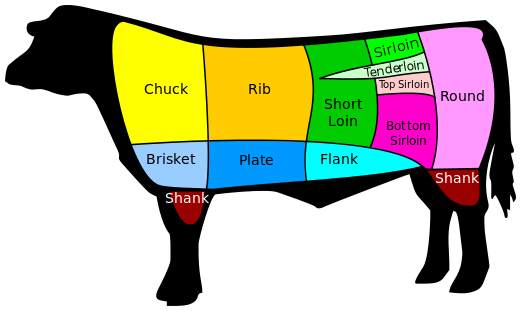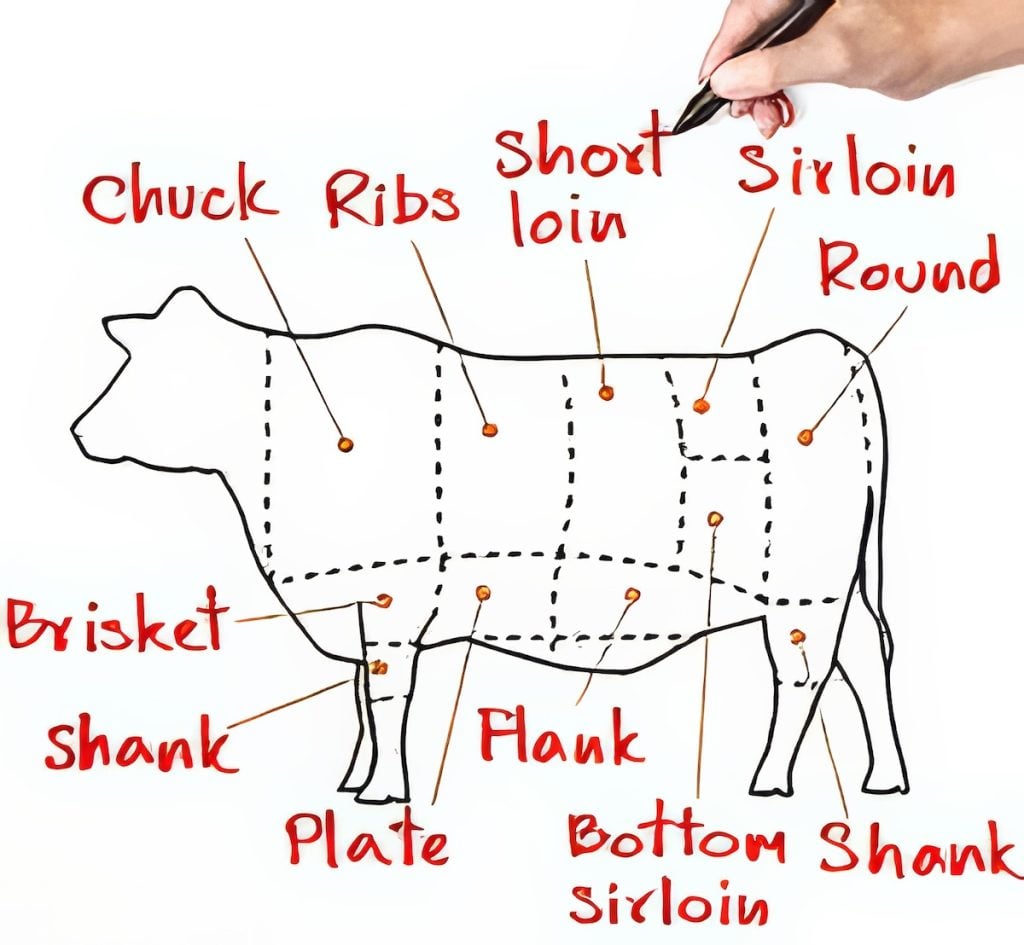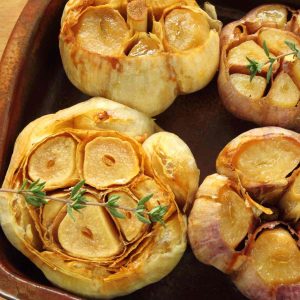Check out all of my favorite Beef Charts on my Pinterest

Popular Beef Cuts and Steaks By Section
There are several beef cuts most of us have not heard of nor need to know about unless you are a butcher or professional. Suppose you are looking for detailed descriptions of all the various retail cuts from the entire cow. In that case, I suggest you check out the University of Kentucky College of Agriculture, Food and Environment website.
And be sure to look at this fantastic beef fabrication video by Dr. Gregg Rentfrow from the University of Kentucky, showing how butchers “break down” a cow for retail cuts.
Chuck Section
There are eight retail cuts taken from the chuck, but some of them are the same cut. For example, there is the Chuck Arm Roast and the Boneless Chuck Arm Roast. Same cut but one with the bone and the other without.
Then there are the steaks cut from the same section that are cut less than 2 inches thick versus the roasts that are more than 2 inches thick. An example would be the Chuck Arm Steak and the Boneless Chuck Arm Steak.
All these cuts have intermuscular fat or fat between the muscles and intramuscular fat or fat within the muscles, also called marbling. The best cooking method for all these cuts is moist but sometimes dry.
What I find interesting is when someone says the best cut of beef for stew or pot roast is a chuck roast, do they mean Chuck Arm Roast, Chuck 7-Bone Roast or Chuck Blade Roast? Or does it make a difference? I’m not sure.
Brisket
Right below the chuck and above the shank is the brisket. With many layers of fatty muscles, the best way to cook a whole brisket is the moist heat method.
The brisket is broken down into a Flat Half Brisket or a Point Half Brisket. The Flat Half is taken from the rear part of the Whole Brisket, contains no bones, and is a grainy cut of meat with lots of fatty layers. The Point Half Brisket is cut so it tapers to a point and has no bones.
If you are looking for the best cut for corned beef, most people will tell you the Flat Half cut. It is easier to cut and offers a better presentation, although some will tell you the Point Half cut has more flavor.
Shank
The shank is right below the brisket in the front and right below the round in the rear. So it’s the leg bone.
You have the Shank Cross Cuts and the Boneless Shank Cross Cuts. Both are extremely tough cuts, usually cut perpendicular to the bone approximately 2 inches thick.
The best way to cook these cuts is by using moist cooking techniques like braising or boiling. I’ve made beef osso buco from this delicious shank cut. It’s not as tender as veal osso buco but a heck of a lot cheaper.
If braising beef shanks, dozens of recipes depend on what ingredients you braise with them. However, when cooked properly, it is an inexpensive culinary delight.

Rib Section
The rib section gets a little confusing. At least, to me, it does. I’ve looked at over a dozen sites about meat cuts from universities to steak sites and I’m still not sure I have this right but I’ll give it a go.
To be clear, a cow or steer had 13 ribs on each side. Of the 13, the first five ribs are in the chuck (see above), and 6 through 12 are in the rib section. The remaining rib is in the loin cut that we’ll look at below.
There are six cuts taken from the rib section, and they are
- Rib Roast – Large End – the end closer to the chuck, also called the Second Cut
- Rib Roast – Small End – the end closer to the loin, also called the First Cut
- Rib Steak – Small End
- Boneless Rib Steak – Small End
- Ribeye Roast, also called Delmonico steak
- Ribeye Steak, also called Delmonico steak, Spencer steak, market steak or beauty steak
How I See It
The way I see it is both the Rib Roast – Large End + Small End are cut more than 2 inches thick and each has an oval-shaped ribeye muscle. The Rib Roast – Large End has a flat blade bone on one end and 2-3 curved rib bones on the other side. The Rib Roast – Small End has flatter rib bones on both ends.
The Ribeye Roast comes from the Rib Roast – Large End, but the back and rib bones are removed. The Ribeye Steak is cut as an individual steak from the Ribeye Roast.
So when buying a Rib Roast, you can purchase from either the large end or the small end. The small end is closer to the loin and will be less fatty, more tender, and more expensive. Just the opposite is true for a roast coming from the large end.
When cooking cuts from the Rib section, most people suggest a dry heat cooking method, including roasting, grilling or pan frying. These cuts are tender, so they don’t want to be cooked too long, or they will be overdone. Check my post for making a standing rib roast.
Plate Section
The Plate section is right below the Rib section and contains two incredible cuts, the short ribs and the skirt steak. Short ribs may be one of my favorite cuts of beef and can be prepared in so many ways, but they are best when using a moist cooking method.
Short Ribs
You’ll typically find two cuts of short ribs at your market. One is flanken and the other is English cut. Flanken-cut short ribs are what you typically find sold in fancy restaurants. They are cut across the bone with layers of fat and lean meat and are typically about 2 inches thick.
English-cut short ribs are cut between the ribs to separate them so you end up with a thick piece of meat sitting on top of the rib bone. I often buy them at Costco, but they are usually boneless. You lose the flavor provided by the bone when braising but much more manageable when serving.
Skirt Steak
Years ago, skirt steak was a cheap cut butchers couldn’t get rid of it, so it was a great value steak. However, with the popularity of fajitas, skirt steak has become more popular and expensive.
Also called Romanian steak, it is the cow’s diaphragm muscle that separates the cheek from the abdomen. Sorry, I know that sounds gross.
Skirt steak is usually marinated and cooked very quickly on the grill, pan-seared, or very slowly in a braise. Therefore, it is critical to cut skirt steak across the grain. See how I prepared marinated skirt steak and grilled it.
Work In Progress – Coming Soon
Loin – Flank – Round




